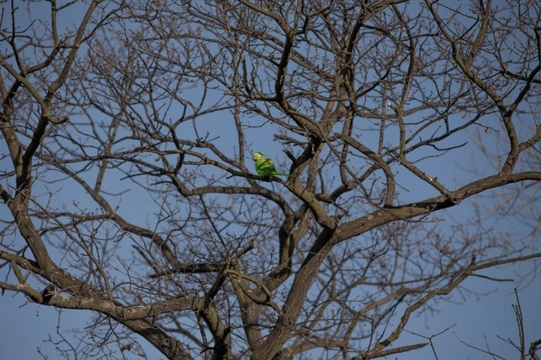
How to find a lost or escaped parrot
Finding a lost or escaped parrot can be a real challenge, and can make you feel as if you’re looking for the proverbial needle in the haystack, while your bird is in danger and cannot take care of themselves and the clock is ticking down.
Naturally it is really important to try to ensure your parrot cannot slip out of a window or door in the first place, but also, even the most conscientious of parrot owners cannot mitigate against every possible eventuality or risk.
If your parrot is lost or has flown out of your house, finding them quickly ensures the best chances of getting them home unscathed; and this article will share tips on how to find a lost or escaped parrot as quickly as possible. Read on to learn more.
Act quickly
First of all, speed is of the essence when it comes to finding a lost or escaped parrot, for a couple of reasons. The first is that the faster you move, the closer to home they are likely to be. This gives you a better chance of spotting them and so not having to factor in where to look, and having a smaller area to cover.
Your bird is also unlikely to have either gotten scared and flown off without paying much mind to where they’re going, nor to have got the taste of the wild and be keen to disappear!
Finally, a domestic bird loose outside is in danger, from predators, the elements, and much more, and the longer they’re out, the greater the risks.
Where will an escaped parrot be?
Knowing where to even start looking for a lost parrot isn’t always intuitive, particularly if you’re panicking. Where to look for an escaped parrot also depends on things like whether or not they fly, and how long they have been outside of the home for.
You can improve your chances of finding your parrot by looking first in the right sort of places, rather than running around in a panic.
If your parrot can fly and you know they like flying and are capable in the air, then trees are the obvious place to look or target; particularly those with lots of finer branches and foliage.
If your parrot has their wings clipped or is not generally that bothered about getting airborne, hedges and bushes and a bit closer to ground level is where to start; factoring in too that if your bird can get into a tall tree lower down and climb upwards, they may be higher than you think they would be.
Most birds will avoid wide open areas and will look for branches and trees and try to get a reasonably high vantage point, even if this means climbing.
Look for signs from predators
If you’ve been checking out trees and bushes within the sort of range you think your bird might have gone and you’re coming up blank, you need to think about things a bit more laterally, particularly if your bird has been out for an hour or more.
Something that isn’t reassuring to learn but that is important to factor in anyway is that an escaped parrot (particularly one that is brightly coloured, and smaller parrots) will be a target for predators; and while you might immediately think “cats,” and this is certainly a risk, they are actually more likely to come to the attention of other birds.
Crows, magpies, and other large birds in the corvid family will often “gang up on” other birds, particularly ones that are colourful and have no sense of self-preservation in the wild.
So if you can see or hear birds of this kind making a fuss, circling, or appearing to keep swooping at something in a tree, it might be your parrot.
Listen for your bird
When looking for a lost pet of any kind we of course call their name and make the sort of sounds we know they respond to. However, when you’re looking for a parrot it is just as important to listen; they may or may not respond to you if you call them but they may well be vocalising anyway, particularly if they’re usually fairly vocal birds in general, so pause regularly and just listen.
You’re far more likely to hear your parrot than you are to see them if they’re in a tree with foliage, so think about this and get close to larger, taller or very leafy trees and listen out.
Also, there is also merit to calling and making sounds your bird responds to, but do give plenty of time for responses and to listen as well.
If you can’t find your bird within a few hours, advertise the loss
Parrots are usually easy to spot and when lost, get a lot of attention from people who see them loose, so if you cannot find your bird within a few hours, advertise their loss.
Use local bird owner’s groups and forums, lost pet websites, lost pet and local area Facebook groups, and contact vets to advise them too in case your bird is handed in.
Put up posters around the area and vitally, advise when you advertise the loss what people should do if they do spot or find your bird; as there is a risk that someone well-meaning might scare your bird off if they try to catch them.



